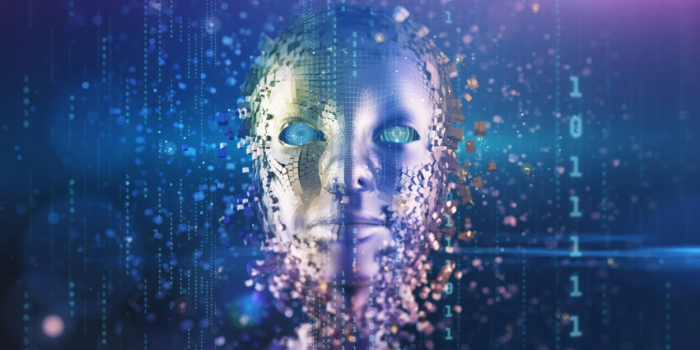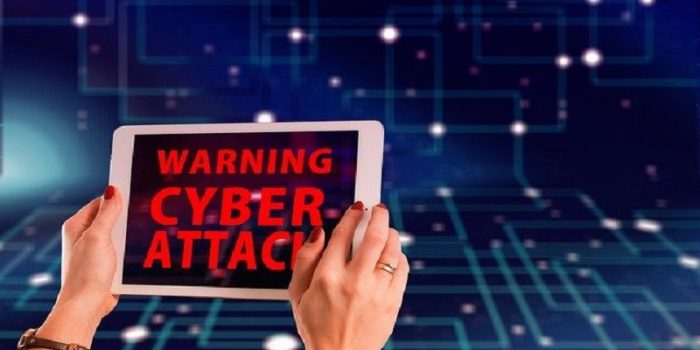
Deepfake Attacks and Cyber Extortion: Mounting Risks
Deepfake attacks and cyber extortion are creating mounting risks, threatening individuals, businesses, and even national security. These sophisticated attacks exploit the power of artificial intelligence to create realistic, yet fabricated, videos and images that can be used for malicious purposes.
From blackmail and reputation damage to financial fraud and political manipulation, the consequences of deepfake attacks can be devastating.
The rapid advancement of deepfake technology has made it increasingly difficult to distinguish between genuine and fabricated content. This has created a climate of uncertainty and fear, as individuals and organizations struggle to discern truth from fiction. The implications of this technological evolution are far-reaching, with the potential to erode trust, undermine democratic processes, and reshape the very fabric of our digital world.
The Rise of Deepfake Technology
Deepfake technology, a rapidly evolving field of artificial intelligence (AI), has gained significant attention for its potential to manipulate and generate realistic synthetic media. This technology utilizes advanced machine learning algorithms to create highly convincing fake videos, images, and audio recordings, blurring the lines between reality and fabrication.
Evolution of Deepfake Technology
The evolution of deepfake technology can be traced back to the early 2010s, when researchers began exploring the possibilities of using AI for image and video manipulation. The development of generative adversarial networks (GANs) in 2014 marked a significant turning point, enabling the creation of more realistic and sophisticated deepfakes.
GANs consist of two neural networks, a generator and a discriminator, which compete against each other to produce increasingly convincing synthetic content. Early deepfakes were often crude and easily detectable, but advancements in AI and computing power have led to a rapid increase in their realism and sophistication.
Modern deepfakes can convincingly mimic facial expressions, lip movements, and even voice patterns, making it increasingly difficult to distinguish them from genuine content.
Deepfake attacks and cyber extortion are becoming increasingly sophisticated, posing a serious threat to individuals and businesses alike. To combat these threats, we need to leverage powerful data analysis tools like those offered by google sheets data microsoft power bi , which can help us identify patterns and anomalies that might indicate malicious activity.
By combining these tools with robust cybersecurity measures, we can better protect ourselves from the growing risks of deepfake attacks and cyber extortion.
Ethical Implications of Deepfake Technology, Deepfake attacks and cyber extortion are creating mounting risks
The potential for misuse of deepfake technology raises serious ethical concerns. Deepfakes can be used to spread misinformation, damage reputations, and manipulate public opinion. The ability to create highly convincing fake videos of individuals saying or doing things they never did can have devastating consequences, leading to legal disputes, social unrest, and even political instability.
For example, a deepfake video of a politician making inflammatory statements could be used to sow discord and undermine public trust. Similarly, deepfakes could be used to create fake evidence in legal proceedings or to blackmail individuals.
Real-world Deepfake Attacks and Consequences
There have been several real-world examples of deepfake attacks, highlighting the growing threat posed by this technology. In 2019, a deepfake video of a prominent politician was widely circulated online, causing significant public controversy and raising concerns about the potential for political manipulation.
In another incident, a deepfake video of a celebrity was used to create a fake advertisement for a product, highlighting the potential for financial exploitation.These examples demonstrate the growing need for robust measures to detect and mitigate the risks associated with deepfake technology.
Deepfake Attacks and Cyber Extortion: Deepfake Attacks And Cyber Extortion Are Creating Mounting Risks
The rise of deepfake technology has opened a Pandora’s box of possibilities for malicious actors, allowing them to manipulate and exploit individuals and institutions in unprecedented ways. Deepfake attacks, which involve using artificial intelligence to create realistic but fabricated videos and audio recordings, have become a potent tool for cyber extortion, reputation damage, and even political manipulation.
Methods Used in Deepfake Attacks
Deepfake attacks can be carried out through various methods, each designed to inflict specific harm.
Deepfake attacks and cyber extortion are becoming increasingly sophisticated, making it harder than ever to protect ourselves online. A strong VPN can be a vital tool in this fight, masking your IP address and encrypting your data. To find the best protection, check out this list of best Chrome VPN extensions and choose one that fits your needs.
With a reliable VPN, you can browse the web with greater confidence, knowing your data is secure and your identity is protected from these growing threats.
- Blackmail:Deepfakes can be used to create compromising videos of individuals, which can then be used for blackmail. This involves threatening to release the fabricated content unless a ransom is paid. For example, a deepfake video could depict a public figure engaging in illegal or immoral activities, leading to demands for money to prevent its release.
It’s scary how fast deepfake attacks and cyber extortion are becoming a real threat. It feels like every day we hear about a new scam or a company getting hacked. And while we’re worried about our online security, Apple is busy releasing new tech like the Vision Pro, which starts at a surprisingly affordable $291 a month over 12 months apple vision pro financing starts at dollar291 a month over 12 months.
But honestly, I’m not sure I’d be comfortable spending that much money on a device right now, especially with all the risks out there. I’d rather put that money towards a solid cybersecurity setup.
- Reputation Damage:Deepfakes can be used to damage the reputation of individuals or organizations. Fabricated videos or audio recordings can be used to spread false information, smear campaigns, or create a negative public image. For instance, a deepfake video of a politician making inflammatory or controversial statements could significantly damage their public standing.
- Financial Fraud:Deepfakes can be used to impersonate individuals in financial transactions, leading to financial fraud. This could involve using a deepfake voice to impersonate a CEO or financial executive to authorize fraudulent transfers or investments.
Motivations Behind Deepfake-Based Cyber Extortion
The motivations behind deepfake-based cyber extortion are often driven by financial gain or political manipulation.
- Financial Gain:Deepfake attacks can be highly lucrative for attackers, as they can demand significant ransoms from victims who are desperate to protect their reputation or prevent the release of compromising content. For example, a deepfake video of a celebrity engaging in illicit activities could be used to extort millions of dollars.
- Political Manipulation:Deepfakes can be used to influence public opinion and manipulate political discourse. Fabricated videos or audio recordings of political figures can be used to spread misinformation, sow discord, or undermine trust in institutions. For example, a deepfake video of a politician making a controversial statement could be used to influence voters during an election.
Psychological Impact of Deepfake Attacks
Deepfake attacks can have a profound psychological impact on victims, leading to feelings of anxiety, paranoia, and a loss of trust. The potential for long-term harm is significant.
- Loss of Trust:Deepfakes can erode trust in individuals and institutions, as it becomes increasingly difficult to discern truth from fabrication. This can lead to a general sense of unease and suspicion, making it harder to navigate social and political interactions.
- Emotional Distress:Victims of deepfake attacks can experience significant emotional distress, including anxiety, depression, and post-traumatic stress disorder (PTSD). The fear of being targeted again and the potential for reputational damage can have a lasting impact on their well-being.
- Social Isolation:Deepfake attacks can lead to social isolation, as victims may be reluctant to interact with others for fear of being targeted again. This can lead to feelings of loneliness and isolation, further exacerbating their psychological distress.
Defending Against Deepfake Attacks

The rise of deepfake technology has created a new wave of security challenges, demanding innovative solutions to combat the growing threat of deepfake attacks. Deepfakes, highly realistic synthetic media, are increasingly used for malicious purposes, including spreading misinformation, damaging reputations, and even facilitating financial fraud.
While the technology continues to evolve, so too must our defenses against it.
Challenges in Detecting and Preventing Deepfake Attacks
Deepfake attacks pose significant challenges due to the sophistication of the technology and the lack of widespread awareness. Deepfake creators are constantly refining their techniques, making it increasingly difficult to distinguish genuine content from fabricated media. Additionally, the widespread availability of deepfake software and the ease of creating convincing deepfakes have contributed to a surge in their use.
The Role of AI and Machine Learning in Combating Deepfake Attacks
Artificial intelligence (AI) and machine learning (ML) play a crucial role in combating deepfake attacks by developing sophisticated detection algorithms and authentication tools. These technologies can analyze various aspects of media, including facial expressions, body language, and audio patterns, to identify inconsistencies and potential signs of manipulation.
- Deepfake Detection Algorithms:These algorithms are trained on large datasets of real and synthetic media to identify subtle inconsistencies, artifacts, and anomalies that may indicate a deepfake. These algorithms can analyze facial features, lip synchronization, and other visual cues to detect inconsistencies.
- Authentication Tools:Authentication tools are used to verify the authenticity of media by leveraging blockchain technology, digital signatures, and watermarking techniques. These tools can help track the origin and history of media, making it more difficult to manipulate or forge.
Best Practices for Individuals and Organizations
Individuals and organizations can take proactive steps to protect themselves from deepfake attacks.
- Media Literacy:Develop critical thinking skills to evaluate the authenticity of media. Consider the source of the information, look for inconsistencies or unusual details, and be skeptical of content that seems too good to be true.
- Security Measures:Implement robust security measures to protect personal and organizational data from unauthorized access. This includes using strong passwords, enabling two-factor authentication, and keeping software up to date.
- Awareness and Education:Educate individuals and organizations about the risks of deepfake attacks and the importance of being vigilant. Encourage critical thinking and responsible sharing of information.
Legal and Ethical Considerations

The rise of deepfake technology has brought to the forefront significant legal and ethical challenges, demanding a careful examination of the implications of this powerful tool. Deepfakes, with their ability to convincingly manipulate images and videos, blur the lines of reality and truth, raising concerns about privacy, misinformation, and even the potential for inciting violence.
Legal Frameworks and Their Limitations
Current legal frameworks struggle to effectively address the unique challenges posed by deepfake attacks. While existing laws, such as those related to defamation, fraud, and privacy violations, might be applicable in some cases, they are often insufficient to fully capture the complexities of deepfake technology.
- Lack of Clear Definitions:One of the key challenges is the absence of clear legal definitions for deepfakes, making it difficult to identify and prosecute offenses related to their use. This ambiguity can lead to inconsistent application of the law and make it challenging for law enforcement agencies to effectively investigate and prosecute deepfake-related crimes.
- Challenges in Proving Intent:Another significant obstacle is the difficulty in proving intent in deepfake attacks. Establishing that the creator of a deepfake intended to cause harm or deceive can be complex and require extensive evidence, especially when the technology is used for malicious purposes.
- Global Nature of Deepfake Technology:The global nature of deepfake technology further complicates legal responses. Deepfakes can be created and disseminated across borders, making it challenging for individual jurisdictions to effectively regulate their use and enforce relevant laws.
Ethical Considerations
The ethical implications of deepfake technology are profound and far-reaching. Deepfakes have the potential to undermine trust in information, manipulate public opinion, and erode the very fabric of truth.
- Privacy Violations:Deepfakes can be used to create fabricated content that violates the privacy of individuals by depicting them in compromising or embarrassing situations without their consent. This can have severe consequences for their reputation and personal lives.
- Spread of Misinformation:The ability to create realistic deepfakes poses a significant threat to the dissemination of accurate information. Deepfakes can be used to spread false narratives, manipulate public opinion, and undermine trust in legitimate sources of information.
- Inciting Violence:Deepfakes can be used to create fabricated content that incites violence or hatred against individuals or groups. This can have devastating consequences, leading to real-world harm and social unrest.
Hypothetical Scenario: A Deepfake Attack
Imagine a scenario where a political candidate’s opponent creates a deepfake video of the candidate making inflammatory remarks about a minority group. The video is widely shared on social media, causing widespread outrage and potentially impacting the candidate’s election chances.
- Legal Challenges:This scenario raises several legal challenges. While the video is fabricated, it can be difficult to prove the creator’s intent to deceive or harm the candidate’s reputation. Additionally, determining the legal jurisdiction for prosecution can be complex, especially if the video is created and shared across multiple countries.
- Ethical Considerations:The scenario also raises significant ethical concerns. The deepfake video violates the candidate’s right to privacy and undermines public trust in the electoral process. It also highlights the potential for deepfakes to be used as a tool for political manipulation and to spread misinformation.
The Future of Deepfakes and Cyber Extortion

The rapid advancement of deepfake technology presents a complex and evolving landscape for cybersecurity and society. While the technology offers exciting possibilities for entertainment and creative expression, it also poses significant risks, particularly in the realm of cyber extortion. As deepfakes become more sophisticated and accessible, we can expect to see new and increasingly sophisticated forms of cyber extortion emerge, demanding proactive measures to mitigate these risks.
Potential Evolution of Deepfake Technology
Deepfake technology is expected to become increasingly sophisticated, with advancements in artificial intelligence (AI) and machine learning (ML) algorithms. The creation of deepfakes will become easier, faster, and more accessible, potentially leading to a surge in the production and dissemination of these manipulated media.
- Enhanced Realism:Deepfakes will become more realistic and indistinguishable from genuine content, making it harder for individuals and organizations to discern authenticity. This increased realism could exacerbate the impact of deepfakes, leading to greater public distrust and potential for manipulation.
- Multimodal Deepfakes:Deepfakes will extend beyond static images and videos to encompass multimodal content, including audio, text, and even tactile sensations. This will create new avenues for manipulation and deception, potentially impacting virtual reality (VR) and augmented reality (AR) applications.
- Real-Time Deepfakes:The ability to create deepfakes in real-time could enable malicious actors to manipulate live video feeds, potentially impacting live events, video conferences, and even social media interactions.
New Forms of Cyber Extortion
The evolution of deepfake technology will create opportunities for new forms of cyber extortion. Malicious actors could leverage deepfakes to:
- Blackmail and Extortion:Deepfakes could be used to create compromising content of individuals or organizations, which could then be used for blackmail or extortion purposes. This could involve creating fake videos of individuals engaging in illegal or embarrassing activities, or generating fake evidence to discredit or frame individuals.
- Reputation Damage:Deepfakes could be used to spread misinformation and disinformation, damaging the reputation of individuals or organizations. This could involve creating fake videos of individuals making inflammatory statements or engaging in unethical behavior, potentially leading to reputational damage and financial losses.
- Social Engineering:Deepfakes could be used to impersonate individuals or organizations, enabling social engineering attacks. This could involve creating fake videos of CEOs or other high-profile individuals making financial requests, or using deepfakes to gain access to sensitive information through phishing attacks.
Solutions to Address Deepfake Challenges
Addressing the challenges posed by deepfake attacks and cyber extortion requires a multi-faceted approach involving technological, legal, and societal solutions.







